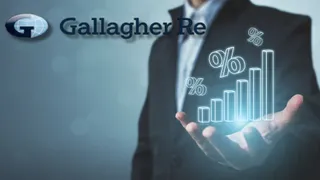
The power of precision
In the late 1990s, e2Value co-founders Todd Rissel and George Moore were working at a high-end personal insurance company. They used the then available technology to study each loss and see how the data the company used could be matched so they had a good level-set for any total loss.
“The value won’t tell you if one construction type withstands non-cat weather better versus another. The SIS can."
“After a few years and many losses, I concluded it was the underlying data and the methodology that was the issue,” says Rissel.
He and Moore knew that brokers and agents needed a tool that enabled them to put in a few points of data and get a reliable, fairly close estimate of a home’s replacement value, so that they, as well as the underwriters and claims departments, could all have a value they agreed on from the first minute of the policy to the last.
“The process needed to be faster, more accurate, easy to use and to move from a fractured paper or PC world to a big data mindset,” he says. “A structure value is one thing but having the structure data is the real nirvana of the process.”
The pair had to build the tool they needed because nothing close existed. In doing so, they moved valuation from a process that was two-dimensional and easy to hack, break and falsify, to a three-dimensional, thinking, artificial intelligence (AI) system. The result was a unique, now patented, process for valuation.
“The core centres around breaking structures down to a standardised, consistent set of data and matching that to each zip (postal) code in North America,” says Rissel. “With just an address we can value a one-room cabin and the most luxurious and expensive homes in the world, and everything in between.
“We want to keep the process simple and understandable for the end user. The system is the expert, they don’t have to be. After any cat events, especially last year in California, carriers, managing general agents and wholesalers using us saw that improvement in every policy, benefiting them as well as their consumers.”
Main service
Pronto is e2Value’s main service. It uses publicly available or client-supplied data to deliver a value and the related data. It can be used for any home or commercial building and is ideal for lead generation, initial quotes, field services and claims.
“Most portfolio that are not reviewed by e2Value are, we believe, over-covering smaller risks and vastly under-covering larger risks,” says Rissel.
“Carriers use us to help them set the base as to data and values. Then, they can use a scalpel to apply rate changes where needed, versus a blanket approach.”
e2Value’s wide range of customers are in London, Canada, and the US, from one-person brokers to top 10 carriers.
“We tend to be used first for the ‘difficult’ risks, such as high value residential, manufactured/mobile homes and farm structures. Then we are brought in to value regular residential and commercial structures,” says Rissel.
The e2Value core system was built to be easily updated. It constantly transforms as technology and data sources develop.
“We can be connected to any data source a company likes,” says Rissel. “Today, it is mostly raw data from the tax authorities. Soon AI tools will deliver that data. We can work with any data input.”
The firm now works with Willis Towers Watson to offer a Structure Insurance Score (SIS).
“Much of the structure world is value-centric in rating,” says Rissel. “The SIS is the first step to moving to a peril-centric rate taking into account how a structure reacts to such perils.
“The value won’t tell you whether a fire or water loss is more damaging to one home versus another. The value won’t tell you if one construction type withstands non-cat weather better versus another. The SIS can.
“It can work with blockchain, easily introduce internet of things (IoT) data to a rate, and connect loss control measures such as water detection or leak detection to actuarially sound rate adjustment. It is a simple debit or credit to anyone’s current rate process,” he explains.
The biggest trend Rissel sees in the field is that the holders of risk are noticing the disconnect between what was expected to happen and what happened.
“As cat events happen, companies are seeing that the measurements are not accurate,” he says.
“Some look at the models, I tend to look at what the model is measuring against. There is now enough data that it is a small step to prove.”
He expects a move to more actual, real-time, on-the-spot data gathering using everything from satellite imagery to IoT data.
“In the end, I believe, a simple way to measure, underwrite, and rate the risk is needed,” he says. “That’s where we are excited about how we can help clients do just that.”
Already registered?
Login to your account
If you don't have a login or your access has expired, you will need to purchase a subscription to gain access to this article, including all our online content.
For more information on individual annual subscriptions for full paid access and corporate subscription options please contact us.
To request a FREE 2-week trial subscription, please signup.
NOTE - this can take up to 48hrs to be approved.
For multi-user price options, or to check if your company has an existing subscription that we can add you to for FREE, please email Elliot Field at efield@newtonmedia.co.uk or Adrian Tapping at atapping@newtonmedia.co.uk
Editor's picks
Editor's picks
More articles
Copyright © intelligentinsurer.com 2024 | Headless Content Management with Blaze

